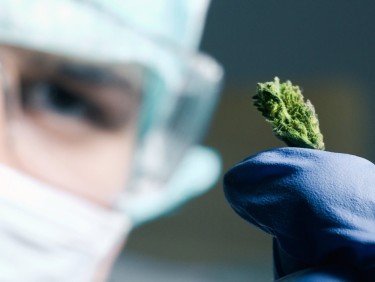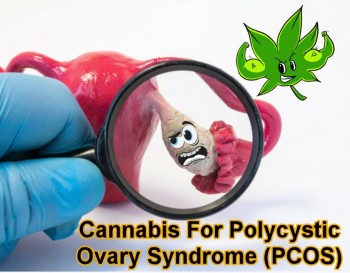
Hop Latent Viroid Perspectives - Origins, Greed, and other perspectives
https://www.reddit.com/r/collapse/comments/13s19mo/comment/jloddmt/
For those who have been reading our work here at Cannabis.net - you should be “somewhat” savvy on “The Hop Latent Viroid” that has cost billions of dollars in losses to the cannabis industry.
If you haven’t heard of it, let me provide you with a quick introduction to the topic as the purpose of this article is to go beyond that and listen to what industry experts have to say about it. Well, people who work in the field.
Here’s a snippet from another article here on Cannabis.net by Joseph Billions;
What is Hop Latent Viroid?
The Hop Latent Viroid, also known as HpLVd is a single-stranded infection that depends on the metabolism of its host plant to replicate itself. This Viroid happens globally in "Hops" and can infect the hop's relative, which is the cannabis plant.
The Viroid is also an infectious pathogen that causes diseases in the marijuana plant. It is often referred to as "Dudding disease," and sometimes the infected plants are initially asymptomatic (doesn't show symptoms). This infection can also be dormant in plants for an extended period, and eventually, the symptoms become evident. - Read more
The infection reduces the potency of THC which for the industry is a big deal. However, the purpose of this article is not to discuss the disease itself, but rather the origins, the theories and to tune into the conversation happening in the industry.
Is it all corporate greed?
According to one Redditor, we can trace the problem of the viroid to greed.
It's simply a result of an industry living on hype cycles. All those fancy strains are unstable hybrids, which gives more yield and potency, but comes at the cost of basically having to resort to cutlings from a carefully selected mother plant. Compare the root system of plants grown that way to ones grown from seed, and the difference becomes immediately obvious: that thing that looks like a little carrot missing on cutlings is incredibly important for the plant's immune system. So, not only does the practice of propagating from a mother plant spread the virus, it spreads it to already weakened plants. Sorry, no sympathies there, it's just the usual mix of greed and stupidity.
And it's not only greed from growers, it starts with the seed producers. Maturing a strain to stability takes a lot longer than just banging something together for the next competition and slapping a fanciful name on it. Worse, a stable strain will not require people to buy seeds for their next mother again, you just can just produce seeds the old way yourself. Several thousands from a single run, easily. So no more selling seeds in packs of ten for vastly over-inflated prices, you'd actually have to compete on convenience.
The whole industry is after the quick buck and literally reaping what they sow. - Feliz Magnetus
According to this Redditor, the reason why the viroid spread so much, and why it even became such a problem in the first place is due to greed. By trying to optimize the natural cycles and to engage in pure cloning, you destabilize the genetics and create opportunities for pathogens to go ham.
However, not everyone agrees with opinion as illustrated here;
Liquid_At claims it’s CBD;
As a clone producer who successfully manages the viroid I have to partially disagree with the analysis.
Hop Latent Viroid primarily spread through seeds of CBD-Strains during the hype a few years ago. With a little help of pests like mites that spread to areas where they didn't exist previously due to climate change, the viroid spread around the globe fast.
Since the viroid can easily be spread through seeds, having a clean environment with mother plants and a skilled team working them, is currently the best approach to combat it
There was a lot of greed and stupidity involved, but claiming that clone manufacturers were to blame is easy to debunk. The source of the outbreak is known to be the CBD-Seed-Scene and producers of clones are victims of that.
However, while this is the opinion of a “clone producer”, another redditor chimed in with a different assessment of the root cause of the origins of the viroid.
I do tissue culture, including virus elimination in cannabis.
From what I have seen hop latent's spread in the hydro industry is multifaceted. Part of it comes from the human vectors: cutting tools not being disinfected between plants. Another part comes from the communal "foot baths" used in many hydro settings: flood trays, drip systems, etc. in which the virus spreads at the root level, partly from the higher concentration found there.
moreover, the distribution of the viroid was tissue-specific, being lower in the stem apex and higher in roots, and showed a negative correlation with the nuclease activity (Matousek et al., 1995).
I have heard of entire grows being decimated by hop latent despite having been warned by consultants: a lead grower who says "no, that's something else," only to have their crop ruined because they're growing more virus from their horticultural practices.
The industrialization of any crop is bound to have these sorts of things happen, and the approach taken within the cannabis industry has been conducive towards the spread of hop latent. Be thankful it's not a tobamovirus like tobacco mosaic virus, which would make disinfection and starting over well nigh impossible without throwing out every article used in production. - TDZ12
This is an important point. Once a tobacco plant is infected with tobamovirus, it shows various symptoms. The most common symptom is the appearance of mosaic patterns on the leaves, which gives the virus its name "tobacco mosaic virus" (TMV). The leaves develop mottled or patchy discoloration, similar to a mosaic artwork. Other symptoms may include stunted growth, distortion of leaves, and reduced yield.
The impact of tobamovirus on tobacco crops is significant. The virus affects the quality and quantity of the harvested tobacco leaves. Infected plants may produce smaller leaves, and the overall yield can be reduced. Additionally, the virus affects the curing process, which is essential for developing the desired flavor and aroma of tobacco. Curing infected leaves can be challenging, and the final product may have a lower quality and value.
Fortunately, the Viroid isn’t as dangerous as TMV, yet this doesn’t meant that it can’t tank an industry that relies on shotty genetics to make it’s money.
Sticky Bottom Line
In conclusion, the Hop Latent Viroid has had a significant impact on the cannabis industry, causing billions of dollars in losses. While there are different perspectives on the origins and causes of the viroid's spread, there are a few educated guesses we can make based on the information provided.
One perspective suggests that the viroid's spread can be attributed to greed within the industry. The focus on creating unstable hybrid strains and relying on cuttings from a selected mother plant, rather than stable seeds, has destabilized genetics and created opportunities for pathogens to thrive. This perspective places blame on both growers and seed producers who prioritize quick profits over long-term stability.
However, another viewpoint suggests that the viroid primarily spread through CBD seeds during a hype period a few years ago. Other vectors, and the introduction of pests like mites, aided by the spread of seeds, facilitated the rapid global spread of the viroid. According to this perspective, clone manufacturers are seen as victims rather than culprits, as they are not responsible for the initial outbreak but have been affected by it.
There is also a discussion on the role of human vectors in the viroid's transmission, such as the lack of disinfection between plants and the use of communal systems like flood trays and drip systems. These practices in the hydroponic industry have contributed to the spread of the viroid, highlighting the consequences of industrialization and the need for better horticultural practices.
Overall, the exact origin and primary cause of the Hop Latent Viroid's spread remain speculative, but it seems to be a combination of various factors including unstable genetics, seed distribution, and horticultural practices. It is clear that the industry's focus on quick profits and inadequate measures to control the viroid have played a role in its widespread impact. To mitigate further damage, it is crucial for the cannabis industry to prioritize stable genetics, implement proper disinfection protocols, and adopt better cultivation practices.
MORE ON HLV PATHOGEN SPREADING, READ ON...
WHAT IS HOP LATENT VIROID AND WHY ARE CANNABIS PLANTS IN TROUBLE?







